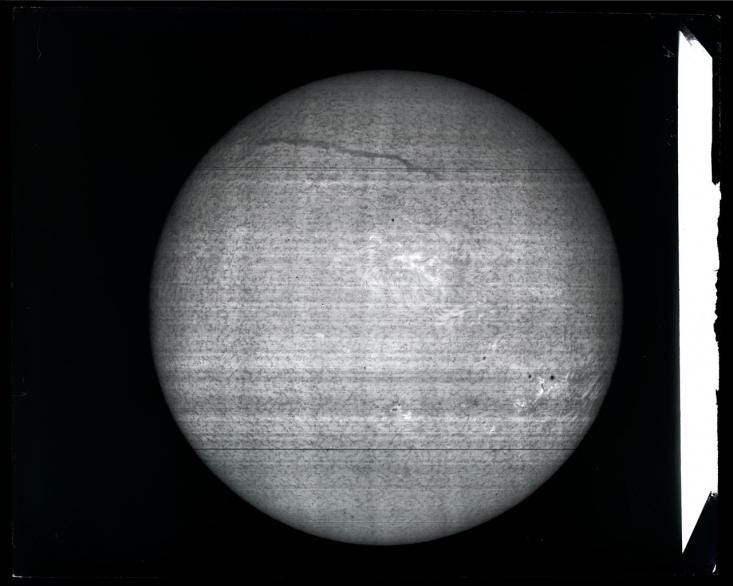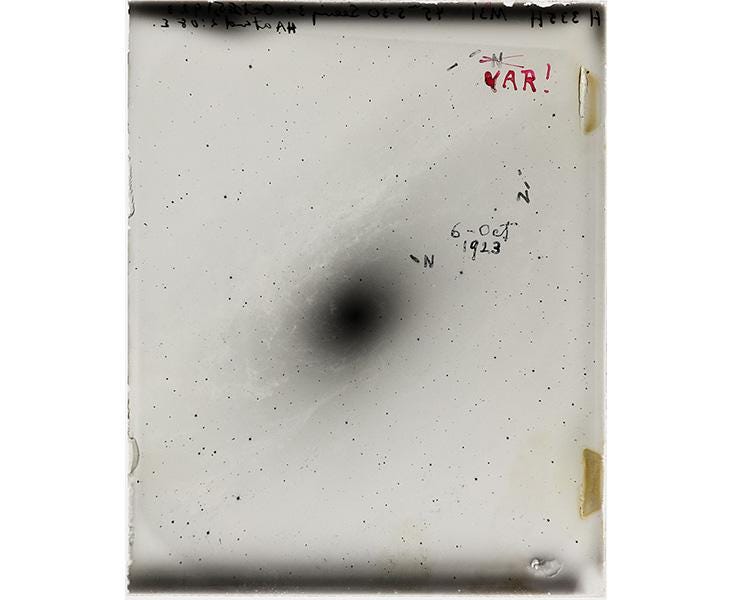Astronomical Glass Plates: Capturing the Cosmos Through Time
Written on
Chapter 1: The Historical Significance of Astronomical Plates
The story of astronomical glass plates unveils a remarkable chapter in the history of astronomy, showcasing pivotal images preserved in the Carnegie Observatories' archives.
On a radiant Christmas morning in 1908, George Willis Ritchey stood atop Mount Wilson, capturing an unprecedented view of the “Great Nebula of Orion.” For nearly four hours, he meticulously operated a massive steel-framed telescope, fine-tuning its settings as it tracked the nebula across the early morning sky. Ritchey's 60-inch reflector, the most powerful of its time, utilized a large curved mirror to gather light from the nebula, which slowly exposed a photographic glass plate about the size of a modern iPad. Once developed, this image was dubbed “Ri-0,” marking the first scientific capture from Ritchey’s innovative telescope.

Today, Ri-0 is part of a vast collection of over 200,000 astronomical plates archived at the Carnegie Observatories in Pasadena, California. Created between 1892 and the early 1990s using various telescopes at Mount Wilson, Palomar (near San Diego), Las Campanas (in Chile), and Kenwood (in Chicago), these plates vary in size from small centimeter-square fragments to larger pieces comparable to a desktop monitor. This extensive collection, the second largest in the United States, contains significant observations that have shaped modern astronomy. These images were instrumental in Edwin Hubble's formulation of the expanding universe theory, George Ellery Hale's discovery of the sun's magnetic field, and the foundational understanding of star and galaxy formation.
Here’s a glimpse of some of the most iconic images captured:
Section 1.1: The Sun’s Magnetic Field
In early 1908, solar astronomer George Ellery Hale began experimenting with specialized photographic plates that were sensitive to red wavelengths of light. His focus was on observing the sun in the H-alpha wavelength, a crucial indicator of a star's atmosphere. After a month of refining his technique, Hale produced his first clear image, showcasing peculiar swirls around sunspots, which he termed flocculi. Although he mistakenly theorized that these flocculi were gas tornadoes, this discovery ultimately led him to accurately conclude the existence of the sun's magnetic field.

Hale further sought direct evidence of the sun's magnetic field using a spectrograph, which disperses light into its frequency spectrum. By placing a 30-foot spectrograph in a concrete well beneath the newly constructed 60-foot solar telescope at Mount Wilson, he captured the resulting spectra on a 17-inch glass plate. In his analysis, Hale noted that sunspots caused some spectral lines to split and polarize light, a phenomenon known as the Zeeman effect, confirming the sun's magnetic field.
Section 1.2: Hubble’s Groundbreaking Discovery
One fateful night in the fall of 1923, Edwin Hubble made a significant 45-minute exposure of what was then referred to as the Andromeda nebula. During this period, there was considerable debate among astronomers regarding whether these spiral formations were small clusters of stars within our Milky Way or massive, distant galaxies. Hubble aimed to resolve this debate.
Upon developing the plate, he believed he had identified a “nova” on the edge of one of Andromeda's spirals, marking it with “N.” However, after comparing it with other photographs taken on different dates, he realized it was a Cepheid variable star, known for its periodic brightness fluctuations. By measuring its luminosity and comparing it with other known variables, Hubble calculated the distance to Andromeda, conclusively establishing it as a vast stellar system beyond our galaxy. In his excitement, he replaced “N” with “VAR!” to signify this monumental realization.

Chapter 2: The Legacy of Astronomical Imaging
The first video titled "Astronomical Glass Plate Photographs" features a presentation by Lindsay Smith Zrull, discussing the historical context and significance of these remarkable images in astronomy.
The second video, "Pluto Festival 2022 | History Captured on Glass: The Pluto Discovery Plates," explores how glass plates have contributed to significant astronomical discoveries, including the discovery of Pluto itself.
The exploration of astronomical glass plates not only illuminates the history of scientific progress but also underscores the essential role these images have played in advancing our understanding of the universe.